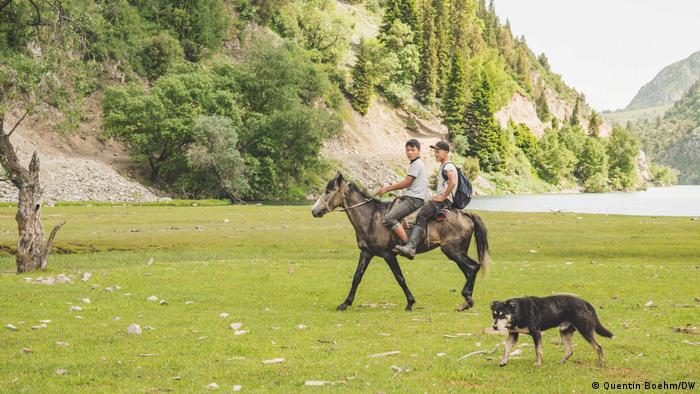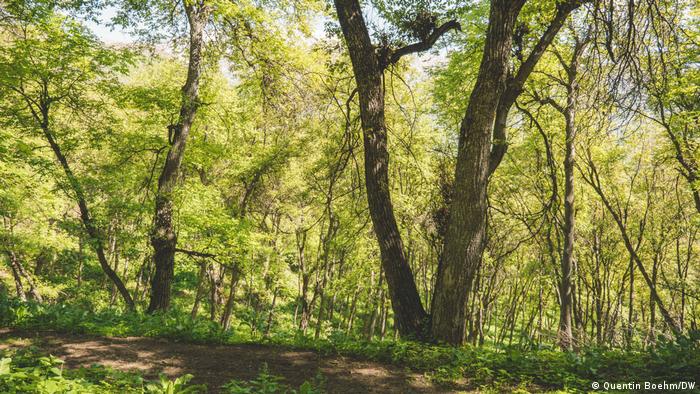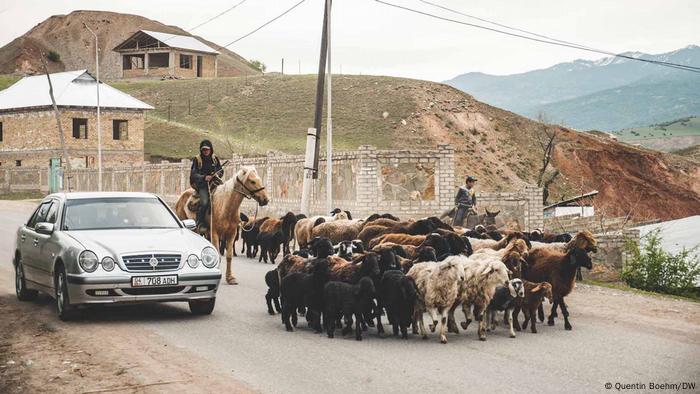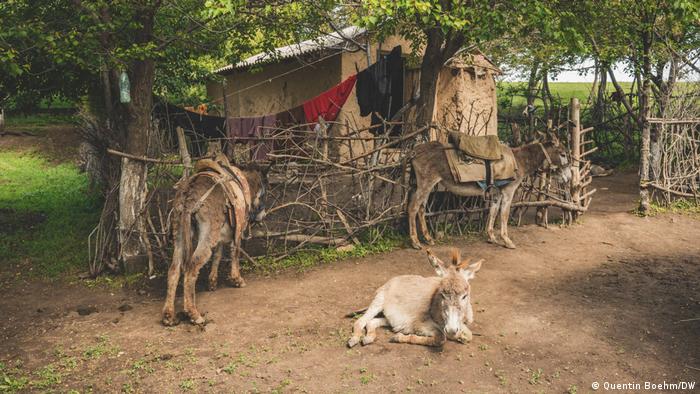Digital technology is helping herders in a mountain village in Kyrgyzstan protect their grasslands from overgrazing, thereby preserving the world's largest natural walnut forest.

In early summer, shepherds lead their flocks to the high pastures above villages in the Jalalabad region of Kyrgyzstan
Kyrgyzstan ancient walnut forest extends over tens of thousands of hectares on the flanks of the Babash Alta Mountains. For generations, an extensive network of villages known as Arslanbob has stretched along the edges of the forests.
In October, the villagers traditionally go to the forest for a few weeks to collect the walnuts. The harvest is sent on trade routes via local markets in the Jalalabad region of Kyrgyzstan along the ancient Silk Road to Turkey, Russia and Iran.

Spring green in Kyrgyzstan's walnut forest – but the idyll is deceptive, the huge forests are endangered
But forests are coming under pressure from climate change, soil erosion and, increasingly, overgrazing. Local initiatives are trying to preserve the forest by engaging villagers in better management not only of the forest itself but also of the surrounding pastures.
Stressed pastures – stressed forests h2>
Traditionally, livestock stay near the village during the winter months, while in summer the villagers herd their animals to the summer pastures in the highlands above the forest. But the multi-day trip is becoming less and less worthwhile because the pastures there are no longer as lush as they used to be.
 < p>In order to find summer pastures for the herds, the shepherds have to drive their animals farther and farther away from the villages
< p>In order to find summer pastures for the herds, the shepherds have to drive their animals farther and farther away from the villages
Therefore, the villagers are increasingly letting their animals graze on the winter pastures that are closer. The result: At the end of summer there is not enough fodder left for the cold months – and so the cattle are driven into the forest to graze.
And that is a problem, explains Hayat Tarikov, who as a forester has looked after the walnut forest all his professional life. Because in spring, animals eat the buds of young trees and shrubs, making it difficult for the forest to regenerate and thrive. The nuts on the forest floor, on the other hand, are of no interest to the cattle. “If people kept their animals out of the forest from September to May, the flora on the forest floor could recover,” says the retired forester.
Digital data for better grazing
Grazing rights are granted in Kyrgyzstan through regional grazing committees made up of village chiefs and shepherds.
Aziz Chirmashev also receives a permit to use upland pastures every year. When the grazing season starts in early summer, he travels there with a 200-strong herd of sheep, goats, horses and cows owned by the villagers in Arslanbob. The longer summer lasts, the higher he drives his flock to reach fresh grass. “Our pastures are getting worse and worse,” says Chimarshev Arslanbob removed – here there is still juicy grass and herbs for the horses
In order to find out exactly how bad the pastures are and where the degraded areas are, the Central Asian non-governmental organization Camp Alatoo is testing a smartphone app that can be used to record the condition of the pastures in the region. Pasture committee leaders collect and transmit data on rocks, lichen, bare soil, and vegetation. This information can be used to determine how much and how long each area can be grazed.
“It is difficult to predict the state of a pasture from one year to the next,” explains Zhyrgal Kozhomberdiev, head of pasture management at Camp Alatoo, “but five years of data is a good starting point for drawing conclusions about changes in a pasture area or region to pull.” The data could then be shared by the committees with pastoralists like Chirmashev, Kozhomberdiev said, helping them reach grazing areas that are not yet overexploited.
Regional seeds for more resilience
The Kyrgyz Ministry of Agriculture also plans to produce seeds of plants typically found in healthy pastures and sow them on degraded land where overgrazing has left only inedible plants.

This shepherd family moves their yurt up to three times during the summer because they move their livestock to higher pastures with more grass
With initiatives to restore pastures and improve the development of remote pastures, it is hoped that herders will no longer turn to the forests to graze their animals.
At the same time, more direct measures are also being taken to improve forest health. Kozhomberdiev reports that a year ago, foresters started looking for the walnut trees, which have proven to be more resistant to soil erosion and irregular rainy seasons.
Their plan: collect nuts from these hardy mother trees and grow seedlings from them, which are then planted in the forest. But that's not a quick fix. On average, walnut seedlings need good conditions for five years before they bear fruit – years when they are particularly vulnerable to hungry cattle and goats.
“The forest is their home”
Kozhomberdiev hopes that the poor walnut harvests of recent years will serve as a warning to shepherds and villagers to “remember the rhythm of the land and limit animal grazing”.

Summer residence of a shepherd: The changing of the seasons determined life in Arslanbob for a long time
Nowadays the rhythm of life in Arslanbob is determined not only by the forest harvest or the herding of cattle to the high pastures. It now takes many villagers to neighboring Kazakhstan or Russia as seasonal workers.
But many of them, according to ex-forester Tarikov, are moving back with the desire to preserve the old forest. “This forest is calling you home”.